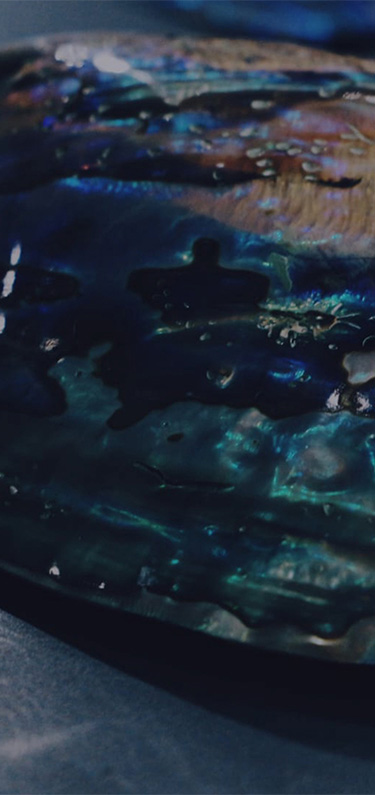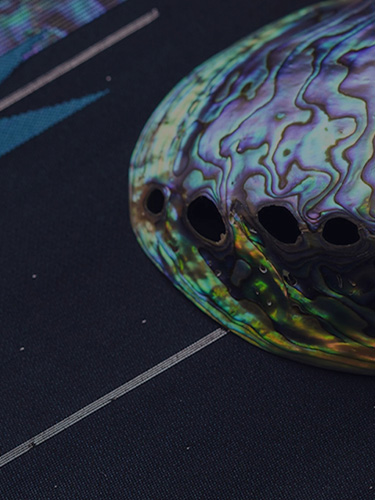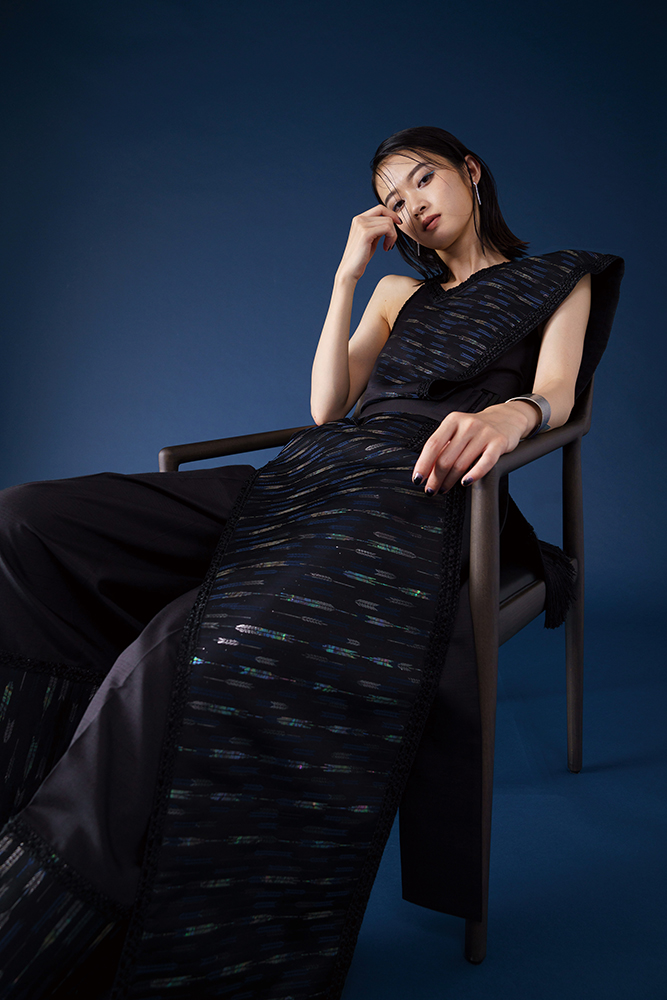RADEN ORI
KYOTO PREF.
Capturing the Flicker of Light and the Sparkle of the Sea in Textile
"Imagine weaving seashells into fabric." In the 1970s, Tango textile merchant Katsuichiro Tamitani,
captivated by the shimmer of the sea in seashells, made this a reality after about two years of research.
Raden, where 'ra' stands for seashell and 'den' denotes craftsmanship, has developed in Japan as a lacquer decoration and established as a technique in maki-e.
This "Raden" and the traditional textile technique "Hikihaku" were merged to create the new technology of "Raden Ori".
This technique involves pasting thinly sliced seashells onto washi paper, cutting them into thin strips, and weaving them as weft threads.
Breaking conventional concepts, Raden Ori expresses the sea's shimmer through a flexible textile.

Thread Making
In the thread-making process for Raden Ori, a stencil is first created based on the design drawing.
The arrangement and structure are planned to best showcase the beauty of Raden.
Following the stencil design, the thinly sliced shell is pasted onto the foil.
Due to changes in humidity and temperature affecting the adhesion of the glue,
its mixture is adjusted each time to ensure the shell does not peel off.
The shells are not simply pasted; their angle and placement are adjusted to enhance the Raden's brilliance.
Foil Cutting
The sheets of shell pasted onto the foil are uniformly cut into strips of 0.6mm - 0.75mm width using a cutting machine blade.
Even slight misalignments during cutting can cause defects in the finished fabric,
so the foil is carefully fixed to prevent peeling during cutting.
Finally, the uniformly cut foil is checked and sent for delivery.
Weaving
Silk threads are wound onto a frame to prepare for weaving.
The cut foil is carefully woven in, one by one, using tools to ensure the foil does not flip over.
This process of pulling the foil from left to right is called 'Hikihaku', a traditional technique of Nishijin-ori obi fabric.
The alignment of the mother-of-pearl layer in the Raden is checked after each thread is woven,
using a mirror placed underneath. Proper alignment enhances the Raden's luster.
Afterward, the foil turned to the backside is left about 2mm long and then carefully cut off one by one with scissors.



















